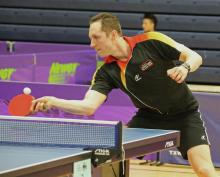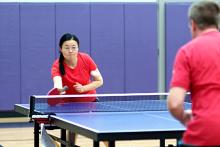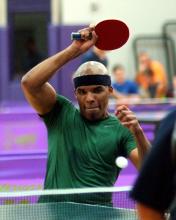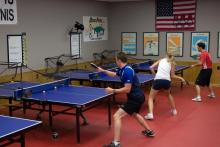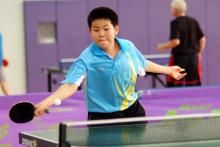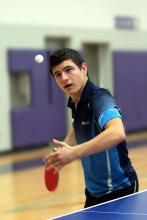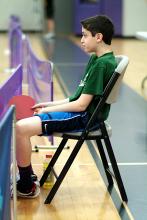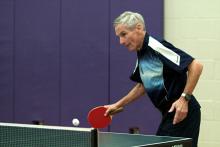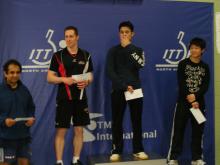An article related to improving players table tennis skills.
by Samson Dubina on Tue, 2014-03-11 12:10
While not as flashy as topspin attacks and kills, few strokes are more important to your success as a player than the often under-appreciated block stroke. The basic “control” block is one of the very first strokes that all players learn and then unfortunately, many players stop developing and improving this core technique.
by Samson Dubina on Mon, 2014-03-10 11:33
The defining element of the sport of Table Tennis is spin. Understanding the types of spin that can be applied to a table tennis ball for any given stroke is imperative for any table tennis athlete wishing to play at a high level.
How many spins can you name?
by Samson Dubina on Fri, 2014-02-28 14:01
Read some quick "thoughts of the day"
When learning a new serve, focus exclusively on developing maximum spin with your wrist.
When smashing topspin, step back away from the table, while smashing forward and slightly down. When smashing backspin, step close to the table, which smashing forward and slightly up.
Remember to anticipate with your feet, while keeping your racket in-front for last second adjustments.
When blocking, remember to think about ball control, placement, and extending the rally as long as possible.
by Samson Dubina on Wed, 2014-02-26 16:42
This article deals with some of the basic Biomechanics involved with a Table Tennis Stroke. It breaks down the stroke into three components.
1. Backswing
2. Contact with ball
3. Follow-through
The Role of the Backswing
Key elements for timing and power production.
by Samson Dubina on Tue, 2014-02-25 21:24
If you are like me your drills have consisted of 5 to 10 minute rounds or one to two passes through a bucket of balls that usually equates to around those times. Then you rotate and let your partner go for a turn. Recently we have changed how we are rotating our drills and for now the outcome has been good.
by Samson Dubina on Wed, 2014-02-19 12:15
Learn what you should be practicing!
Written By Professional Coach Richard McAfee
I often see players spending large amounts of practice time working on a single stroke that they wish to improve. Most often this involves hours of executing the stroke over and over and in conjunction with simple footwork drills. After all this work, the athlete is often disappointed to find that during competition that the same well-practiced stroke breaks down. Why does this happen, because the practice they have been doing does little to link the stroke to the rest of the player’s game.
by Samson Dubina on Mon, 2014-02-17 13:40
Learn a term that the pros use
If you have ever played a world pro tour event, you are probably familiar with the term “lucky loser”. So what does it mean?
A lucky loser is a player who loses in an event but still advances due to an opening in the draw. For example, if there are 152 players entered in one pro tour event, there might be 32 players seeded into the single elimination and 120 players competing in round robin groups. There would be 30 groups of 4 players per group with the winners advancing to meet the 32 seeded players.
by Samson Dubina on Mon, 2014-02-17 13:35
Encouraging and coaching fellow club members at tournaments is one of best aspects of a competition. In this article, I’m going to outline how to coach another player between games. If I were coaching a friend or student, here is what I might possibly say.
Good game – you ended strong with a nice comeback.
by Samson Dubina on Wed, 2014-02-12 11:57
Written By Richard McAfee
One of the most difficult skills for the average player to learn is match strategy. There are several reasons for this.
1. It requires the ability to focus on what your opponent is doing. This can be difficult when your own strokes are not sound.
2. It requires a lot of experience to realize what strategies work against different styles.
3. Finally, it is hard to fine much in writing regarding match tactics. This is largely due to the complexity and individuality of the issue.
by Samson Dubina on Sun, 2014-02-09 18:19
Written By ITTF Coach Richard McAfee
Modern Table Tennis Styles
By Richard McAfee
USATT Certified National Coach
Pages




